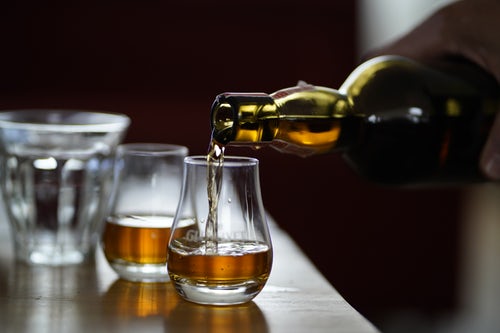
Homebrew Mead is a fermented beverage traditionally made from honey, water and a yeast. It’s one of the oldest alcoholic beverages ever made, as it was consumed as far back as 4,000 years. Interestingly, mead was common across ancient cultures around the world including those in Asia, Europe and Africa. Though, similar to beer, wine or cider, mead occupies a beverage category on its own since its primary fermentable is honey.
Some names you might encounter for mead with additives are:
- Acerglyn – Mead made with maple syrup
- Black Mead – Made with Black Currants
- Bochet – refers to a mead that was made with the honey caramelized or burned before it is added to the water
- Cyser – A mead made with apples or apple juice
- Melomel – Mead made with fruit added
- Morat – A Melomel made from Mulberries
- Mulled Mead – This refers to a mead that is heated before drinking. Typically, it has spices for flavouring.
- Rhodomel – An ancient Roman term for a mead made with rose petals
- Sack Mead – A mead with a very high honey content. It has a high density and is often sweeter than typical meads. This can be thought of as a dessert wine of meads. 14% to 18% alcohol
Honey composition
Honey is usually 16 to 18% water, most of the solids in honey are sugars. By total weight of the honey fructose is about 38%, glucose 31%, disaccharides 9% -mostly maltose with some sucrose, higher sugars 2 to 4%, and then trace amounts of vitamins, minerals and amino and other organic acids.
Honey varieties
Honey is available in either blends, or in single varieties. Varietal honeys, eg Yellow Box, Blue Gum, Red Gum, tend to be more expensive. If you want to add fruits or flavourings, then a blended or clover honey might be a better choice. In any case be guided by how the honey tastes, or what you have ready access to.
Yeasts
Usually, wine yeasts are used for making mead. Champagne yeasts are popular because they have a higher alcohol tolerance than other strains. Probably the most well-known champagne yeast is EC-118 from the Lallemand company. There are also several strains sold as mead specific yeasts.
Mead Ratios
Typical water to honey ratios range from 2 to 3 litres of water per kg of honey. Approximate specific gravities would range from 1130 at 2 litres per kg down to about 1090 for 3 litres per kg.
Alternatively, the honey to water ratio typically ranges from about 350 to 550 grams per litre of water.
You will also see ratios expressed as volumes, one volume of honey to three to four volumes of water
Hydrometer
Learning how to use the hydrometer properly will make your mead making more accurate. Most hydrometers have two scales: density or specific gravity and potential alcohol. Alcohol content as a percentage is calculated by multiplying the difference between the original and final gravities by 0.133. Eg [(1110 – 1020) * 0.133]% = 11.97%, rounded to make 12% alcohol by volume.
